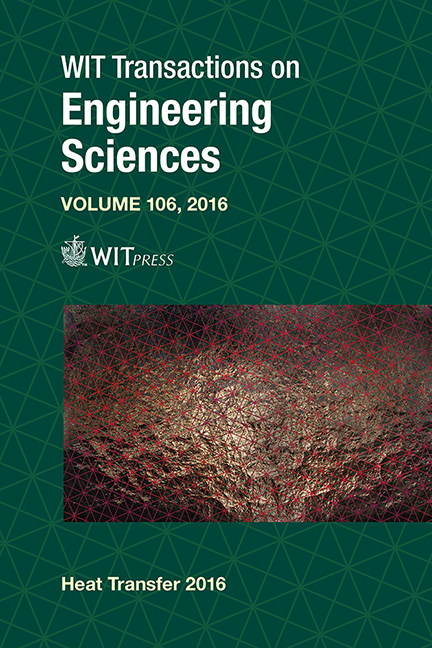Radiant Heat Transfer Reduction Methods In Heat Insulation Of Power Equipment
Price
Free (open access)
Transaction
Volume
106
Pages
8
Page Range
107 - 114
Published
2016
Size
674 kb
Paper DOI
10.2495/HT160111
Copyright
WIT Press
Author(s)
A. V. Ryzhenkov, S. I. Pogorelov, N. A. Loginova, A. F. Mednikov, A. B. Tkhabisimov
Abstract
One common challenge for designers of power equipment to be operated at high temperatures is the reduction of radiation heat transfer. As the emissivity factor of radiating heated surfaces of such equipment in most cases can be reasonably approximated by a constant, the power emitted by them is directly proportional to the fourth power of their absolute temperature. A solution of this problem is the use of thermal radiation shields made from low-emissivity and highly reflective materials. Traditionally heat insulation structures employ aluminum foil as such a shield. However, aluminum is soft and rather expensive, and it also has a low tensile strength. An alternative to the use of aluminum foil is the application to the external surface of the thermal insulation structure of a reflective metal layer via ion-plasma spraying (bombardment) in vacuum or metal spraying (metalizing) by means of an electric arc. In order to find out which method of reduction of radiation heat transfer offers the best results, we have compared a number of methods of thermal radiation shielding (foil winding, ion-plasma spraying in vacuum or electric arc wire spraying) in terms of thermal resistance of proper heat insulation structure. In our paper we have used heat insulation structures with thinfilm heat insulation coatings. The experiments were carried out in conditions simulating real conditions of operation of pipelines and power equipment in Russia. The results of the experiments show that the alternative methods of thermal radiation shielding are more efficient than the traditional one (aluminum foil winding). In particular, the use of an aluminum coating applied to the surface of a heat insulation structure via ion-plasma spraying allows the thermal resistance to increase by 35%; in case of metalizing via electric arc wire spraying the thermal resistance increased by 15% or more.
Keywords
radiation heat transfer, thermal insulation, power equipment, pipelines, shields, thermal resistance, thin-film heat insulating coatings





